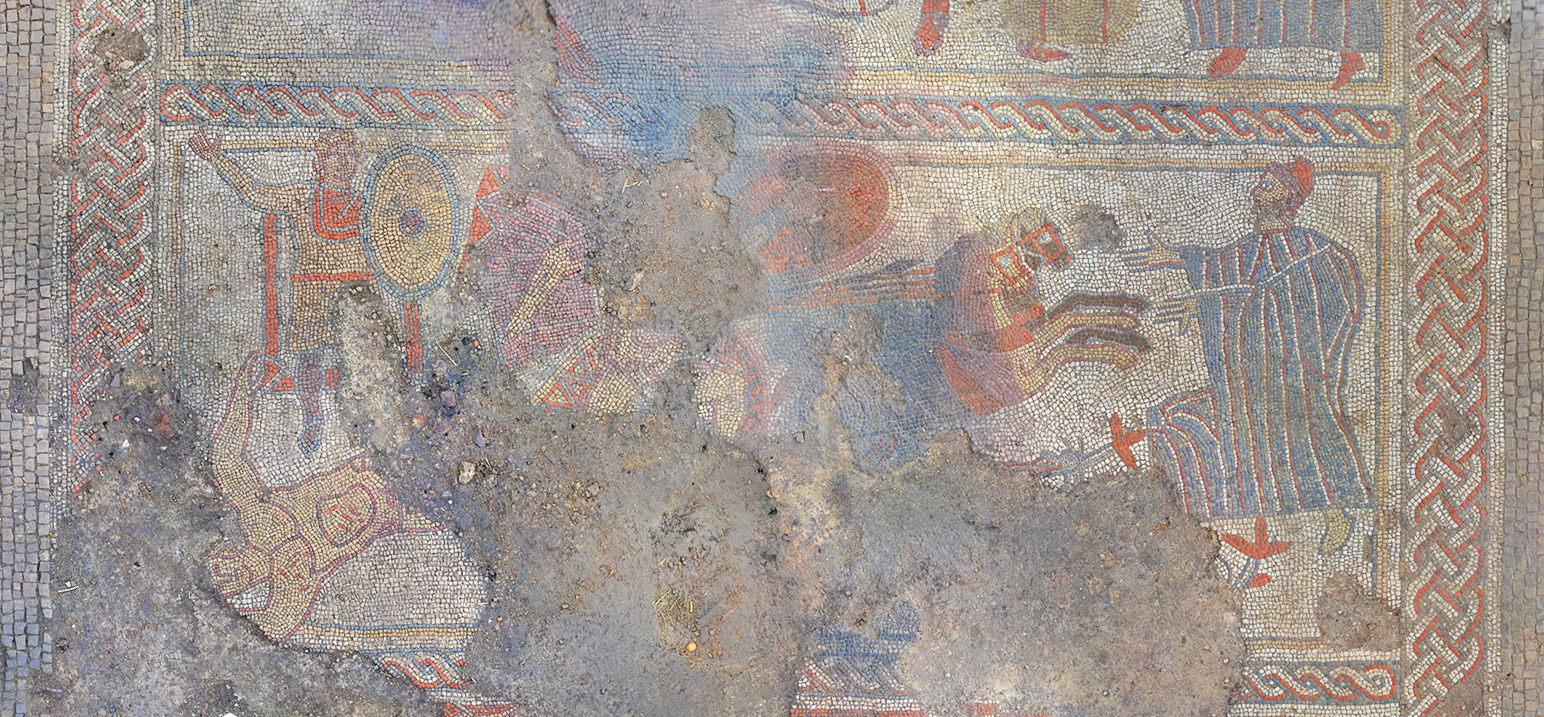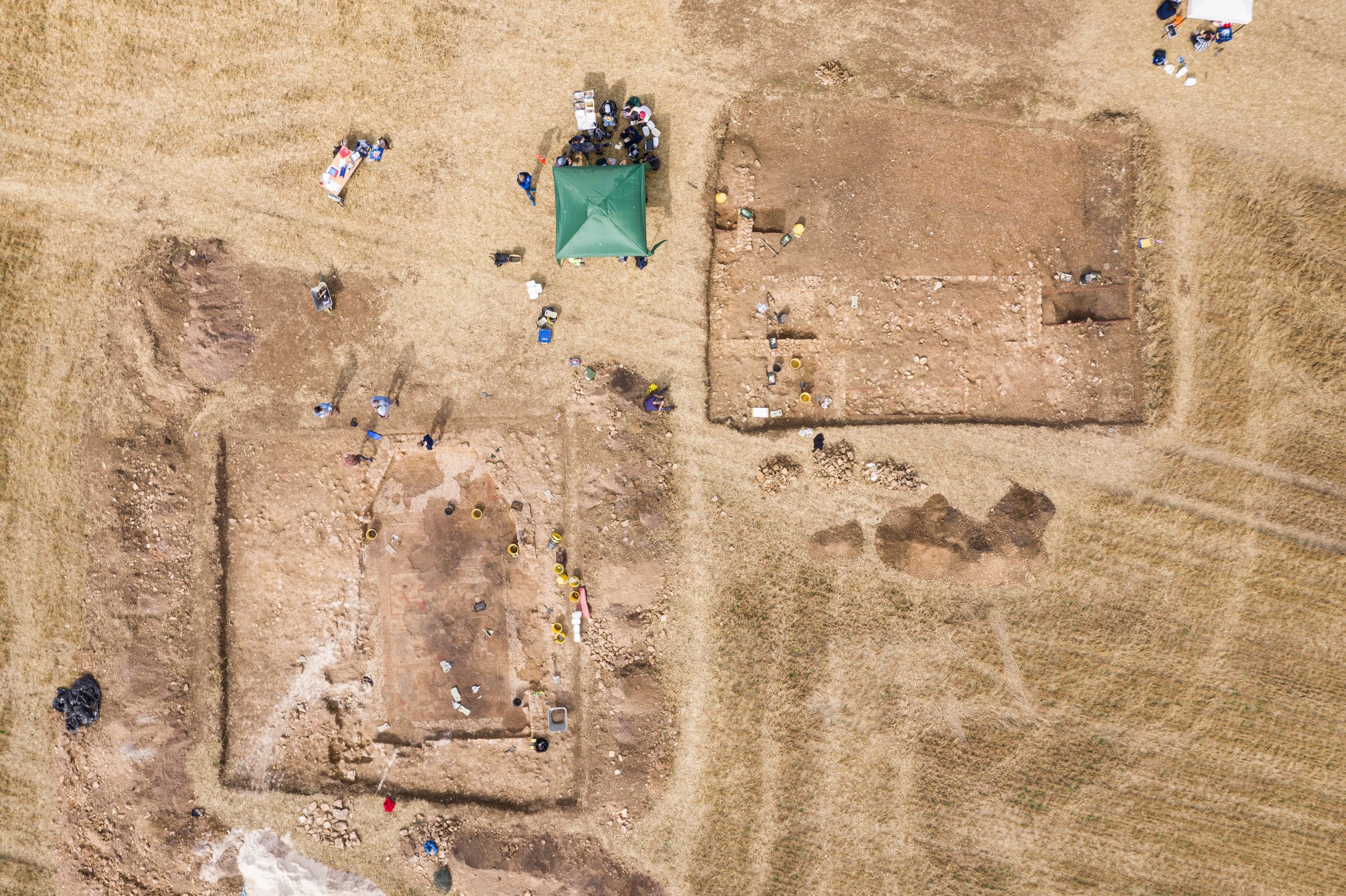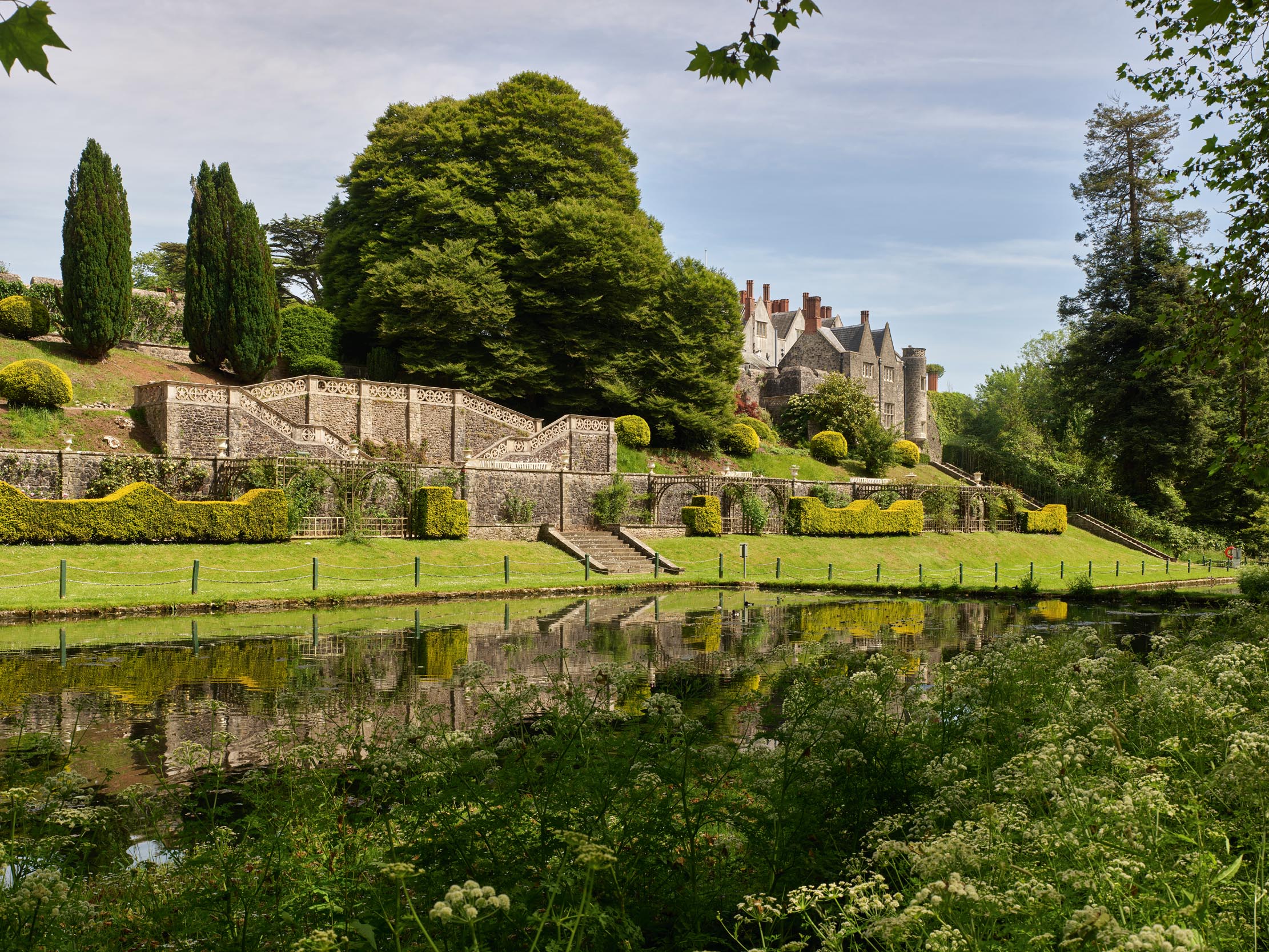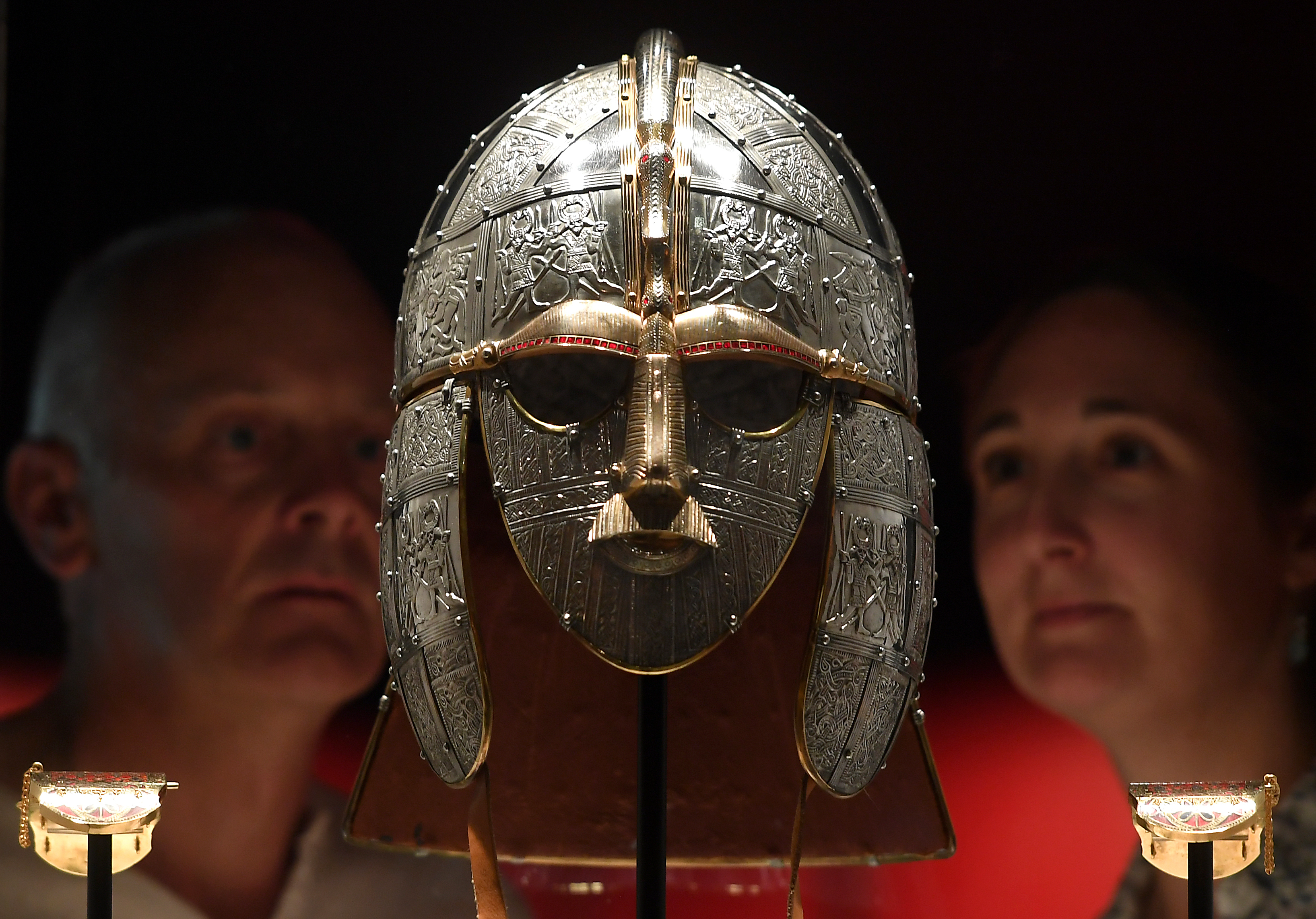The 'unique' mosaic discovered at a Roman villa in Rutland that 'puts the county on a national and international stage'
Excavations at a Roman villa in Rutland have discovered a magnificent mosaic that is believed to be unique in Britain.


An elaborate Roman villa complex discovered in Rutland in 2020 has been protected as a Scheduled Monument, after excavators uncovered a 36ft by 23ft floor mosaic depicting the battle between Achilles and Hector during the Trojan War. This is the first example in the UK to show scenes from Homer’s Iliad and one of only a handful across Europe.

‘What started as a ramble through the fields with the family turned into an incredible discovery,’ explains Jim Irvine, whose father, Brian Naylor, owns the field.
‘Finding some unusual pottery among the wheat piqued my interest and prompted some further investigative work. Later, looking at the satellite imagery I spotted a very clear crop mark… this really was the “oh wow” moment.’
Leicestershire County Council and Historic England got involved, securing funding for urgent archaeological investigations by the University of Leicester Archaeological Services (ULAS) and, as well as the mosaic in a large 3rd–4th-century villa, outbuildings including barns and a bathhouse were found. The rubble above the mosaic contained late-Roman/early-medieval human remains, thought to be a deliberate burial.
‘This has been… extraordinary,’ enthuses Richard Clark, county archaeologist for Leicestershire and Rutland, ‘placing the county on a national and international stage and providing a vivid insight into the life and demise of the local Romano-British elite at a time of remarkable change.’

The mosaic offers ‘fresh perspectives on the attitudes of people at the time, their links to classical literature, and it also tells us an enormous amount about the individual who commissioned this piece,’ adds John Thomas, excavation project manager and deputy director of ULAS.
‘This is someone with a knowledge of the Classics, who had the money to commission a piece of such detail, and it’s the very first depiction of these stories that we’ve ever found in Britain.
Exquisite houses, the beauty of Nature, and how to get the most from your life, straight to your inbox.
'The fact that we have the wider context of the surrounding complex is also hugely significant, because previous excavations on Roman villas have only been able to capture partial pictures of settlements’.

Further excavations are planned and Historic England is working to revert the field to grassland; in the spring, the public can watch footage of the mosaic as it was uncovered for the first time in 1,500 years on the BBC’s Digging for Britain.

The Ring of Gullion AONB: 'A landscape rich with archaeology and mythology, ancient churches and castles'
John Goodall looks at a spectacular part of Northern Ireland that's full of legends and myths.

The astonishing Elizabethan house that lies at the heart of St Fagans National Museum of History, Cardiff
An impressive Elizabethan house is at the heart of the Welsh national collections of history and archaeology at St Fagans

Sutton Hoo's £4m transformation from 'boring heaps of earth' to a place that gives a 'tingle in the hairs on the back of your neck'
Sutton Hoo is famous as one of the greatest archaeological finds in history — but has become infamous for its dullness

Danebury Ring Hill Fort, Hampshire: An ancient fort whose archeology reveals a gruesome past
Danebury Ring, near Stockbridge in Hampshire, is an image of tranquility today — but that wasn't always the case, as Annunciata
Annunciata is director of contemporary art gallery TIN MAN ART and an award-winning journalist specialising in art, culture and property. Previously, she was Country Life’s News & Property Editor. Before that, she worked at The Sunday Times Travel Magazine, researched for a historical biographer and co-founded a literary, art and music festival in Oxfordshire. Lancashire-born, she lives in Hampshire with a husband, two daughters and a mischievous pug.
